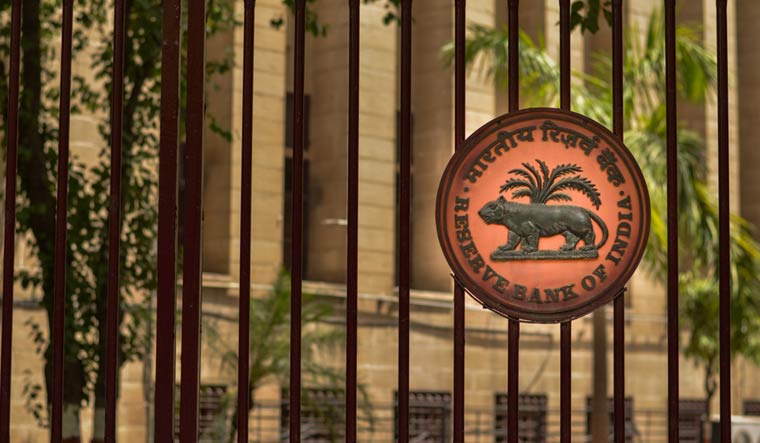The Reserve Bank of India’s monetary policy committee (MPC) meets this week, beginning Tuesday. Over the last two years, the central bank has slashed interest rates and ensured there is ample liquidity in the system to support an economy ravaged by the Covid-19 pandemic. Even after the previous MPC meet, Governor Shaktikanta Das said the overarching priority was to broaden the growth impulses while preserving monetary and financial stability.
But times are changing. Global central banks have begun hardening their monetary stance amid a surge in inflation to record levels. The US Federal Reserve is expected to raise its benchmark rates by at least four times in 2022. The Bank of England has already raised rates. Foreign institutional investors have been pulling out of emerging market equities, including India, in droves.
Inflation will be a key matter of discussion for the MPC too. Crude oil prices have hit $90 a barrel and are expected to rise further. While domestic fuel retailers haven’t raised pump prices for a while in the wake of the upcoming assembly elections in various states, there could be a spike after the polls. This will clearly have a bearing on retail inflation, which hit a five-month high of 5.59 per cent in December 2021.
Finance Minister Nirmala Sitharaman announced a huge 35.4 per cent increase in capex spending to spur growth and investment, while keeping the fiscal consolidation gradual, in the Union Budget. The government’s borrowing this year is going to be elevated to meet the spending requirements. How the Reserve Bank manages the large borrowing programme and system-wide liquidity will have to be watched out for too.
In this backdrop, a few economists now expect the RBI to start normalising the monetary policy by first raising the reverse repo rate in the upcoming policy, before hiking the repo rate in the subsequent policies. The reverse repo rate is the rate at which a central bank borrows money from commercial banks for the short-term. The expectation is that the reverse repo rate, which is currently at 3.35 per cent, will be raised by 20-40 basis points this time from around.
“Amidst global inflation pressures, tightening monetary policies by global central banks, high oil prices, domestic inflation and sharp rise in domestic (bond) yields, the MPC will have a tight rope walk as they discuss the monetary policy stance and interest rates,” said Shanti Ekambaram, group president – consumer banking, at Kotak Mahindra Bank.
She expects the RBI to change the reverse repo rate by up to 25 bps.
“With the government well and truly accepting the mantle of reviving growth, the RBI no longer needs to prioritise growth over inflation,” felt Arvind Chari, chief investment officer at Quantum Advisors.
In the last few months, as the India’s economic growth has rebounded, the central bank had started mopping up excess liquidity through several variable rate reverse repo (VRRR) auctions. With these VRRR auctions already happening at close to the repo rate of 4 per cent, it may be time to increase the reverse repo rate by 40 bps to 3.75 per cent, Chari pointed out .
“Given that the economy has recovered and does not need lower rates or higher liquidity, the MPC should change its monetary policy stance to neutral,” he said.
As the central bank slashed its interest rates over 2020, banks also reduced their lending as well as deposit rates. However, in the last few weeks, a few banks have begun raising their term deposit rates.
Small savings rate are already much higher than bank deposit rates. In the current financial year, small savings collections have exceeded the budgeted amount by a large Rs 2 lakh crore. Due to this, there will be pressure on banks to raise deposit rates, feels Soumya Kanti Ghosh, group chief economic advisor at State Bank of India.
Ghosh also feels that time is now “appropriate” to raise the revere repo rate by 20 bps.
“A hike in reverse repo is also required as a larger (liquidity) corridor has resulted in rate volatility,” he said.
The RBI, however, is expected to maintain a status quo on the repo rate for now.
“The MPC would be required to deftly address the challenges associated with global and domestic inflationary pressures, liquidity in the system, uptick in yields as well as the uncertainty around the pandemic. The policy statement would be closely watched for signals of shift in policy stance and the potential timelines for change in policy rates,” said Kavita Chacko, senior economist at CARE Ratings.
Chacko is expecting the RBI to continue to maintain an accommodative policy stance as well as keep interest rates unchanged.
The markets will look forward to guidance on how RBI will manage the large borrowing programme of the government, said Anand Nevatia, fund manager at Trust Mutual Fund.
“Given the global backdrop of most central bankers moving away from the extra accommodative monetary stance and hiking key rates, RBI could move to a neutral stance to have the flexibility to hike rates as and when required,” he said.





